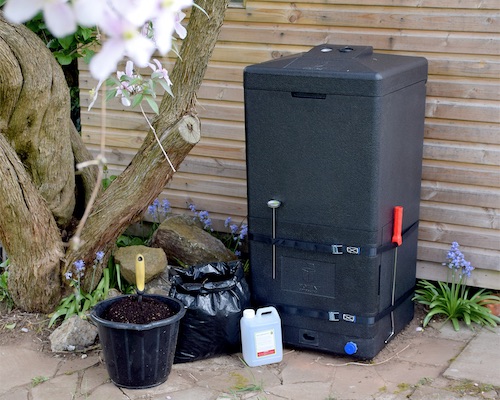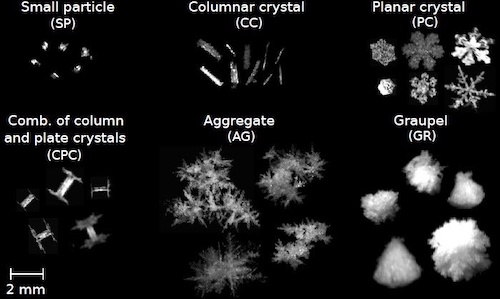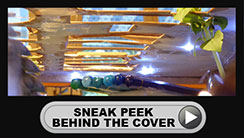
The IWPA photo award 6th edition exhibition will showcase over 30 images from 10 photographers that have been rewarded in 2022 also during this occasion, an announcement about the opening of the Switzerland branch IWPA in Geneva will be made.
Press release, Geneva, June 2nd, 2022
International Women in Photo - Switzerland Branch
International Women in Photo - IWPA officially opened its new branch in Geneva on 5th, May 2022 with four co-founding members. Senayt Santoro, President, Adeline Le Floch, Co-President based in Switzerland and Co-presidents/ Secretary Arantza Aramburu-Hamel and Laure Parise Co-presidents/Treasure in France.
With its community of over 4,000 photographers and a permanent team based in France, Japan and now in Switzerland, IWPA strives relentlessly to enhance gender equality by improving the visibility and recognition of female creators since its creation in 2003. Committed towards concrete actions for change, IWPA supports female creators primarily through its IWPA award, itinerant exhibitions in major cities of the world, its education project and mentoring program « My Photo, My Voice ».
Geneva Exhibition of the 6th Edition of the IWPA Award, June 16th until July 29th 2022
WRP Foundation - 12, rue François Bonivard, Geneva
After Paris, Dubai, Tokyo and Almeria IWPA is pleased to present the best female talents of the IWPA Award 2022 at the WRP Foundation, Geneva. The exhibition presents the photographic works of Award laureate Maryam Firuzi (Iran) and the 10 finalists highlighting their visions of social, cultural and intimate issues.
The IWPA award call running from September to October 2021, reached a final count of over 750 submissions from a record 95 countries, representing all continents and with a considerable increase in entries from Asia, Africa and the Middle East. This is an important step toward reaching IWPA’s goal of promoting the work of women who lack exposure and recognition, while sharing with global audiences diverse stories about the realities of men and women around our planet. An international jury of eminent personalities from the world of photography examined the submissions.

Photo by Prem Roshan on Unsplash
According to tradition the 6th of January, Epiphany, marks the time to take your Christmas tree down and tidy up all the decorations. If you have invested in a cut tree, then you will likely be wondering how to get rid of it ecologically. In Switzerland, each canton has various solutions. Check with your local mairie or voirie to find out what is required.
During the month of January, The Geneva City Service Voirie - Ville Propre Department will pick up your Christmas tree near you. Trees must be placed in the early morning on the street, without decorations, between 5h-6h30 on the day of collection:
- Geneva January only: Mondays, Tuesdays, Thursdays, Fridays
- Lausanne all year: Wednesdays
- Nyon January only: Thursdays
- Renens January only: Mondays (see chart below)
- Divonne-les-Bains: After the end of the year festivities, you can deposit your Christmas tree at the green waste platform - rue du Crêt d'Eau (opposite Carrefour Market) during opening hours Monday to Saturday (except Tuesdays) from 9h-12h30 and 13h30-17h
It is very important that you remove all the decorations, garlands, strings, and tinsel so that the tree can be recycled easily.

The upcoming Lac du Cygne (Swan Lake) exhibit that will take place from 23 September 2021 for one year, is all about the importance of the local swans to our Lake Geneva.
The lake without its swans?
Yet, not so long ago, the swan was an exotic animal. How did the beautiful white bird become the most photographed bird on the lake? Why has this large bird adapted so well to the shores of Lake Geneva? With its majestic silhouette, the way it glides over the water, and its majestic appearance, it embodies purity, love, and fidelity. A caring parent and a perfect companion, this bird is gifted with all these virtues and is loved by all, or almost all.

Call for Swan items for upcoming exhibit
Put your items together and contribute to the upcoming "Lac du Cygne" exhibit at the Musée du Léman in Nyon planned from 23 September 2021 through 18 September 2022. In preparation for the exhibition, they are calling for loans of any of your swan items.
The Museum says, "We realized that in almost every home there is some sort of swan. Look around your home, in your drawers, your cupboards, and your attic; there is surely a swan hidden somewhere. Small or big, kitsch or classic, pretty or ugly, whether it is made of porcelain, crystal, or even crochet, they are all welcome in our exhibition."

We wrote an article about HOTBIN last year at this link. With a special discount for our readers at the end of the article, recycling food waste at home can be started by next week!
It's fast to produce compost in just 30 to 90 days.
- 32 times faster than cold composting
- works all year round
- tidy and compact with a sealed base
- no bad odors
- no accelerators
- no turning or tumbling
- no plug in heat source
So how does it all work? Bacteria naturally populate your waste. They chomp down on your old peelings and pruning and generate heat at the same time. This heat is locked in by the thick insulating walls of HotBin. The hotter the heap becomes, the more efficient. HotBin works to break down your waste and generate rich garden compost.
Just throw in your chopped waste, mixed up with some shredded paper and wood chips, and sit back and let HotBin take the hard work out of composting. HotBin composting. Recycle more if you waste into rich homemade peat-free compost and watch your garden blossom.
Watch this 90-second video ⇩ and see how easy it is to compost at home with HOTBIN.

This week the forecast is snow and you will have the opportunity to observe the snowflakes more closely. What do you know about these beautiful miniature ice sculptures? Thanks to MétéoSuisse for giving knowitall.ch permission to translate their article published in January 2021.
No two snowflakes are alike. An old adage that, on closer inspection, has a good deal of truth to it. The appearance of a snowflake, which can be seen on your coat sleeve or glove, actually tells the story of its life cycle: its birth in a cloud, its descent, its interaction with other crystals, and the atmospheric conditions that see a development that can be read through the below image.

Photos of snow crystals and snowflakes. Source: Praz et al, 2017 (DOI:10.5194/amt-10-1335-2017) Source: Libbrecht, 2005 (DOI:10.1088/0034-4885/68/4/R03)










